
Miscellany – Walking, and winter
27 November 2006
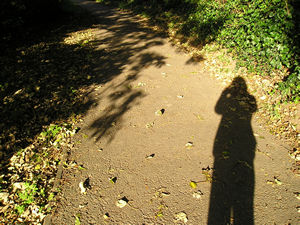
Walking, ideally, is a state in which the mind, the body, and the world are aligned, as though they were three characters finally in conversation together, three notes suddenly making a chord.
Rebecca Solnit – Wanderlust: A History of Walking
There's a sense of exhilaration brought about by walking. It can be explained, I believe, as the result of the release of endorphins, but I prefer the rather more poetic description above.
When I walk I don't stroll nonchalantly, I march, purposefully, even if I don't know where I'm going. (Years ago I realised I spend a lot of time dashing about aimlessly.)
It's much more difficult though, just now, to go walking around looking at things. It's much more difficult to take photos of things. It's much more difficult to do anything, just now, at this time of the year. It's cold, and the daylight hours are short, and like many people, I find this time of year rather depressing. Thinking seems to slow down too, and so writing these web pages is more difficult. This is about the sixth version of this page. (I don't just chuck them together, you know, though it might look like it.)
When I started this website in 2004, I wanted to cover the four seasons, and all the months of the year, but didn't quite manage it. Things tailed off in November. I particularly dislike the six weeks or so in the run-up to Christmas, and this year's no different.
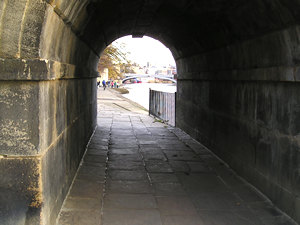
Walking can also be imagined as a visual activity, every walk a tour leisurely enough both to see and to think over the sights, to assimilate the new into the known.
Rebecca Solnit
It seems though that it's even more important to get out walking at this time of year. Recent research suggests that walking helps with all kinds of mental and physical health problems.
I've read recently that a daily one-hour walk, in the middle of the day, can be as helpful as light treatment for coping with SAD. It depends on your work commitments, of course. (Perhaps if it helps that much, legislation should be passed to extend lunchtimes in the winter months, so everyone gets the chance to get outside. Can't see it happening though, can you?)
So I'm trying to get myself out there, whenever the demands of work allow, even though when it's cold I can't really be bothered. Usually somewhere green and open, like the ings, or a park. Just to be able to walk fast, in the fresh air, and any sunlight there is.
It makes it easier then to cope with the light disappearing so early in the day. Though I'm watching the trees dropping their leaves and thinking about how long it is until they grow them back again.
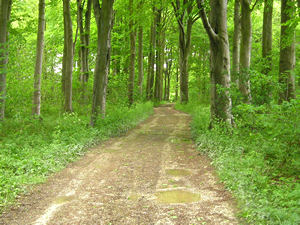
Walking itself is the intentional act closest to the unwilled rhythms of the body, to breathing and the beating of the heart. It strikes a delicate balance between working and idling, being and doing. It is a bodily labor that produces nothing but thoughts, experiences, arrivals.
Rebecca Solnit
I can't imagine that walks at this time of year would ever provoke the kind of giddy heights that earlier walks did, on spring evenings or summer mornings. In winter it's harder to find the kind of easy joy that's so easy to find when high summer sunlight hits the buildings. In winter the light is so low, barely visible behind the buildings later in the day, and the hours of sunlight so few. Some days it's so cloudy it's like living under the sea. So walking a few times a week, on bright days, is maybe a good way of storing up some light, to help us get through the gloomy days.
The quotations on this page are from a book called Wanderlust by Rebecca Solnit. As well as placing walking in its social and historical context, she writes about the satisfaction of walking in one's local patch. She states that "The surprises, liberations, and clarifications of travel can sometimes be garnered by going around the block as well as going around the world." This kind of localised wandering has of course been the basis of this website.
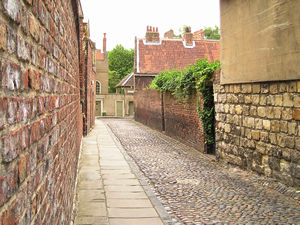
Walking is only the beginning of citizenship, but through it the citizen knows his or her city and fellow citizens and truly inhabits the city rather than a small privatized part thereof. Walking the streets is what links up reading the map with living one's life, the personal microcosm with the public macrocosm – it makes sense of the maze all around.
Rebecca Solnit
I don't drive, and when I'm walking along Bootham or Gillygate past the lines of standing traffic I don't envy people who do. Walking can get you somewhere faster than a car can, in many parts of York. And while I'm walking, I see so many interesting details I'd not notice otherwise.
Perhaps the best thing, in the less crowded streets, or in the parks and other green places, is being able to walk at a faster pace, which does seem to bring about a natural high. The natural high is rather addictive. This probably explains why so many people enjoy going to the gym. Though paying a load of money to run on a machine while staring at a wall doesn't seem so attractive to me.
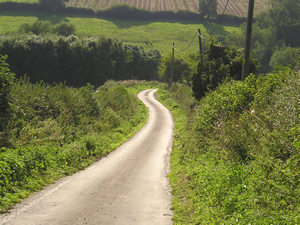
The rhythm of walking generates a kind of rhythm of thinking, and the passage through a landscape echoes or stimulates the passage through a series of thoughts.
Rebecca Solnit
At least walking involves some travelling, and the view changes. Whether the road ahead is in the city centre, or, like this one, out in the fabulous Yorkshire countryside.
Having the co-ordination and strength to walk was something I used to take for granted. But ten years ago, my sister Kay was diagnosed with multiple sclerosis, and in the years that followed, lost her ability to walk. Kay's sight was also affected by the MS. It can affect all kinds of things – the things that many of us take for granted.
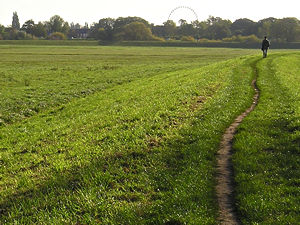
Kay died five years ago at the age of 42. My grandmother, who also had a severe form of MS, died when she was 37.
I know I'm not the first person to find that illness suffered by those we love, and the bereavement that can come later, makes the ordinary things of life more precious. It stops us taking good health, and our mobility, for granted.
I don't need to be in a glamorous or unusual location to appreciate walking. I've had some perfect days, just walking on the ings, or up some Yorkshire hills, or around York. The perfect day, for me, has walking in summer sunlight and warmth, and some wild green places.
Perfect days are harder to find at this time of the year. But walking puts it all into perspective. I've realised that even more in recent years. I hope that it can make even these winter days brighter.
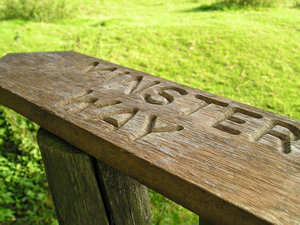
Walking has been one of the constellations in the starry sky of human culture, a constellation whose three stars are the body, the imagination, and the wide-open world.
Rebecca Solnit